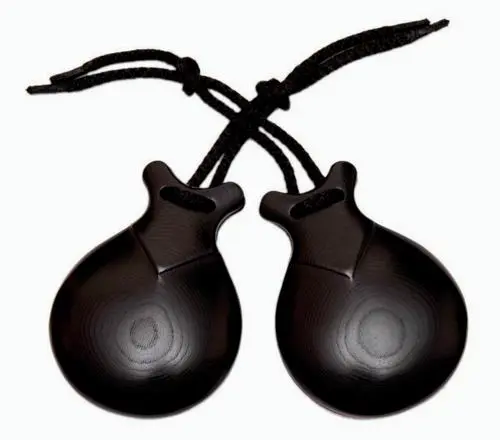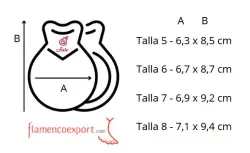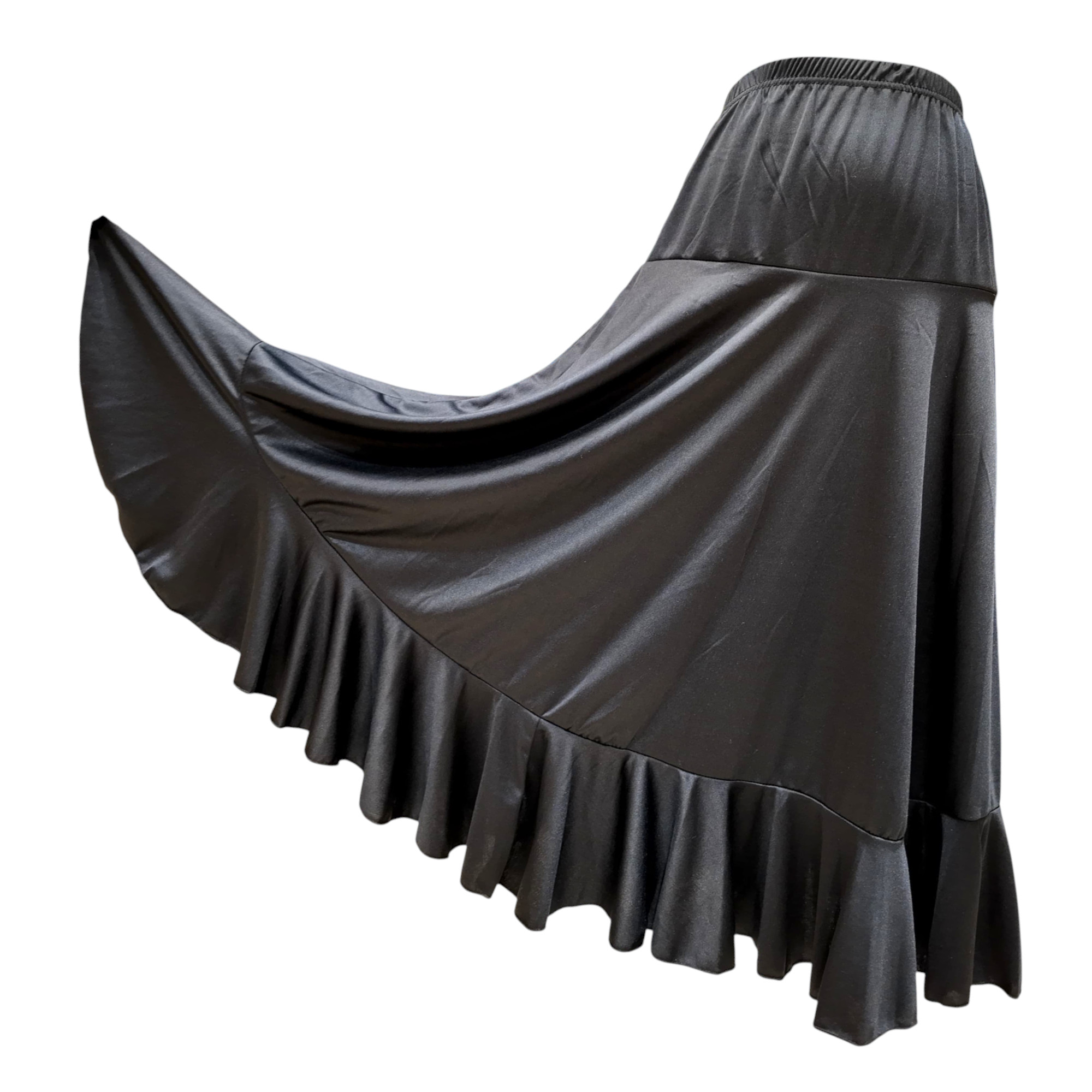Castanets Jale.
The castanets are percussion instruments.
Professional flamenco castanets by Jale. They are made of fibreglass, a material that is extremely hard, comparable for its hardness to the best woods, but which, at the same time, can withstand extreme temperatures better than wood.
- Black Compressed Canvas flamenco castanets.
- With their small cardboard box.
- Fair quality and sound.
Size 8. for man and big hands.
HOW TO PLAY CASTANETS
Castanets are percussion instruments, very old and much used in Phoenicia civilization. Phoenician civilization was an enterprising maritime trading culture that spread across the Mediterranean during the first millennium BC, between 1200 BC and 900 BC. Nevertheless, through history, castanets were used to evoke a Spanish atmosphere. Castanets are a part of the Spanish cultural heritage (they are considered to be the Spanish national instrument). That way the castanets are generally used to give color and to evoke a Spanish musical atmosphere.
How to put on the castanets
First, you must see which castanet in higher pitched than the other.
The higher pitched castanet is placed on the right hand and the castanet with the lower tone on the left hand. In order to do this, the cord of the castanets is put around the thumbs. The castanets must be tight, but not uncomfortably so.
Hand position
It is very important to place your hands correctly while practicing playing castanets. The correct position is with the fingertips toward each other and the palms turned toward the body.
Castanets must be played with these fingers: Little, annular, middle finger and index finger.
Once you have placed the castanets, strike with the middle finger, annular, little at the same time.
First, you strike the right castanet with your right hand. Then, the last sound is cut through with the left castanet and with only one note.
Once the castanets are in place and the hands are in the correct playing position, it is necessary to know that the clicks of the castanets are based on different combinations of five independent elements:
* CA-RRE-TI-LLA: This element is used only by the right hand.
Without forgetting to keep it turned toward the body, in the correct position that we have described above, and moving the wrist as little as possible, begin to play the CA-RRE-TI-LLA, which is composed of four clicks: CA, with the little finger; RRE, with the ring finger; TI, with the middle finger; LLA, with the index finger.
· TAN: This click is called TAN and is played by the left hand immediately after the CA-RRE-TI-LLA. The click is played by the ring finger and the middle finger at the same time.
· TIN: The TIN sound is produced by the ring finger and the middle finger, and the middle finger of the right hand, and it should be after the CA-RRE-TI-LLA-TAN
· TIAN: when the sound TIN and the sound TAN are played simultaneously, it is called the sound TIAN.
· POSTICEO: This sound consists of the clicking together of the two castanets. In order to do this, lift the right hand so that it is level with the left hand and bang the castanets together.










































 Wholesalers/Stockists
Wholesalers/Stockists Contact
Contact









